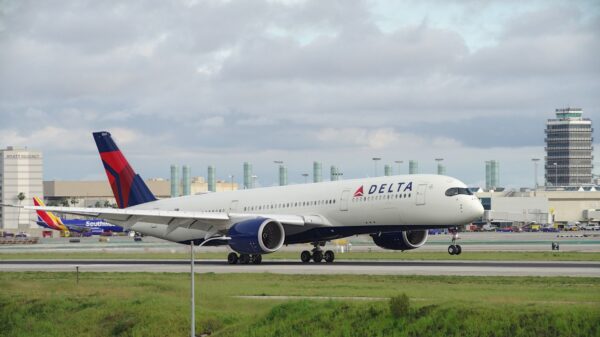U.S. airlines are set to implement significant flight reductions at 40 of the country’s busiest airports starting October 6, 2023, due to the ongoing government shutdown. This decision, mandated by the Federal Aviation Administration (FAA), affects major hubs in cities such as New York, Los Angeles, Dallas, and Chicago, and will disrupt travel for hundreds of thousands of passengers.
The FAA’s directive aims to reduce air traffic by 10% across these key markets as air traffic controllers face increased strain from working unpaid since the shutdown began on October 1. According to a list obtained by The Associated Press, airlines will phase in these cuts, beginning with a 4% reduction on Friday, escalating to 10% in the coming days.
Airlines are urgently adjusting their schedules. United Airlines plans to cut 4% of its flights over the weekend, according to company spokesperson Josh Freed. The FAA had not issued an official order by midday Thursday, leaving airlines scrambling to finalize their adjustments. Multiple airports are impacted, including those in tourist hotspots like Orlando, Miami, and San Francisco, as well as important connecting hubs like Atlanta and Denver.
Travelers are anxiously awaiting updates regarding their flights, as many have already begun altering their travel plans. For instance, Fallon Carter canceled her flight from New York to Tampa, Florida, expressing concern over making it back in time for her best friend’s wedding. “I don’t know if I get there, will I get home?” she said, highlighting the uncertainty facing many passengers.
The FAA’s reduction in traffic is a response to the growing absence of air traffic controllers, who have been increasingly calling in sick due to financial stress caused by the shutdown. The FAA reported that it would reduce air traffic to maintain safety, as controllers are overwhelmed by mandatory overtime and lack of pay. Industry analyst Henry Harteveldt described the situation as having a “noticeable impact across the U.S. air transportation system.”
Airlines, including United, Delta Air Lines, and American Airlines, are working to minimize customer disruptions. They plan to offer refunds to passengers who choose to cancel their flights, even for non-refundable tickets. Frontier Airlines has advised travelers to consider purchasing backup tickets with other carriers to avoid being stranded.
The repercussions of these flight cuts extend beyond passengers, potentially affecting package deliveries as well. Major distribution centers for FedEx and UPS are located at airports included in the FAA’s list, which may lead to further complications in logistics.
Estimates from aviation analytics firm Cirium suggest that as many as 1,800 flights, affecting over 268,000 passengers daily, could be impacted by these reductions. This level of disruption is unprecedented, according to FAA Administrator Bryan Bedford, who noted, “We’re in new territory in terms of government shutdowns.”
The current government shutdown has exerted undue pressure on the air travel system, contributing to a decline in public confidence in the U.S. air travel experience. Geoff Freeman, President and CEO of the U.S. Travel Association, stated that the situation is damaging to the industry.
As the shutdown continues, and with air traffic controller staffing worsening, the potential for further flight disruptions remains high. Over the past weekend, reports indicated that at least 39 air traffic control facilities experienced staffing issues, a significant increase compared to pre-shutdown levels.
In summary, the phased flight cuts at major U.S. airports, driven by the ongoing government shutdown, are set to create widespread disruptions for travelers and the aviation industry alike. As airlines adapt to these unprecedented circumstances, passengers are left to navigate a landscape of uncertainty in their travel plans.







































































